If your content goes viral, you’ll be overwhelmed with traffic and sales!
The iconic video from Dollar Shave Club generated 24 million views and a good marketing strategy helped the company to become the number #1 online razor company — with 51% market share, beating Gillette which has 21.2% share.
How many leads can you generate if your new content brings in 10,000+ traffic overnight or in a week?
For most businesses, it’s difficulting to even imagine the idea of creating virality with their content. Viral posts and videos aren’t the norms — they’re exceptional.
Before your content can hit that viral peak, it needs to possess some uncommon features. BuzzSumo analyzed 100 million posts in 2014 to determine what makes a piece of content get shared.
It’s found that content that gets shared on the web:
- Enticed people to share it with others.
- Were from trusted websites
- Were list posts or infographics
- Had emotions of awe, laughter or amusement.
If you’re able to incorporate any of the emotional features above into your content, you’ll not only generate traffic to your website but drive a movement on social media.
In the rest of this article, you’ll discover how to create viral content that generates more than 3,400 leads.
Remember that generating traffic and leads to your website isn’t something reserved only for influencers and pro bloggers.
What is Viral Content Marketing?
“Viral content marketing is the process of creating content to get it shared on social media, on media sites, industry blogs, via emails, and around the web.”
With traditional marketing, you create a piece of content and hope it gets shared. And because it wasn’t a strategic plan, it doesn’t always get shared.
With viral marketing, though, you’re going to plan your content from the very beginning. And when it’s finally created, you’ll amplify it through promotions and then encourage others to share it as well.
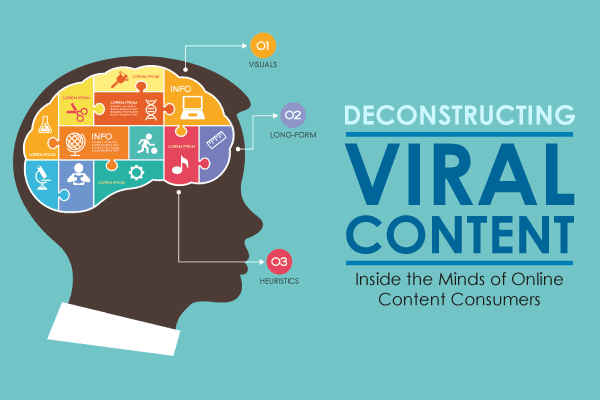
Unfortunately, most businesses and marketers have never achieved virality with content or product. I know it’s tough but it’s doable.
You’ll discover exactly how to go about it — so that you can drive traffic and generate leads in the process.
Benefits of Viral Content Marketing
Ultimately, you’ll have a goal in mind when creating viral content. Let’s briefly examine some of the objectives towards reaching your main goal:
i). It’s cheaper: Paid ads can significantly suck a huge portion of your marketing budget. You need at least $100 to start getting results with Facebook advertising and an additional $100 for Google ads.
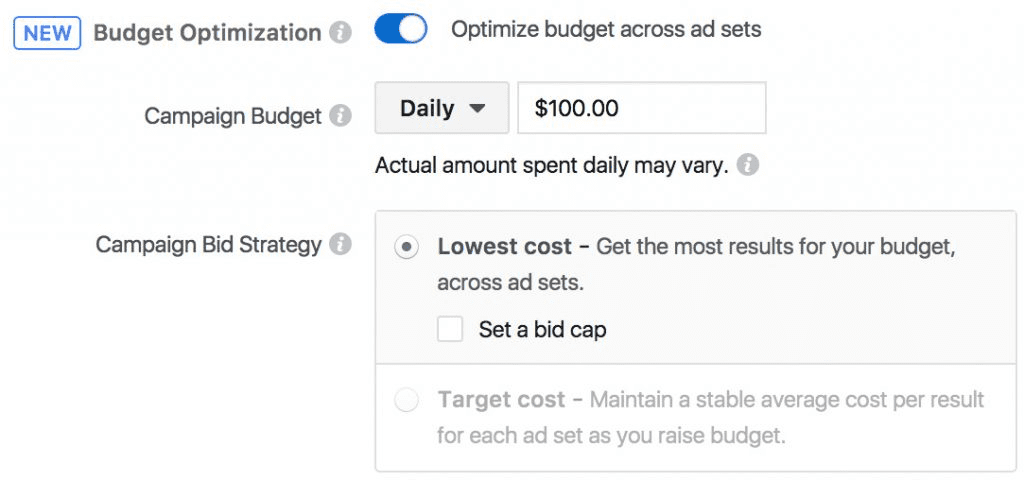
But with viral content, you can decide to do it all by yourself. Of course, it’d require hours of work but that’s okay because the reward will be well worth it.
If you want to promote your content to reach more readers/viewers, then you might want to invest $50 on Facebook boosted posts.
ii). You leverage other people’s time: The beauty of viral content marketing is that other people do the main work of sharing your content.
As long as the content resonates with them, your followers, loyal readers, happy customers, and online users who find it helpful/entertaining will gladly share it.
iii). Global reach: A viral video on YouTube has the potential to reach millions of people on the internet. You don’t have to invest money or make any extra effort.
That’s why creating content is especially beneficial for small companies and marketers who don’t have a huge marketing budget. That’s how a company increased traffic to its website by 1,000% in 8 weeks.
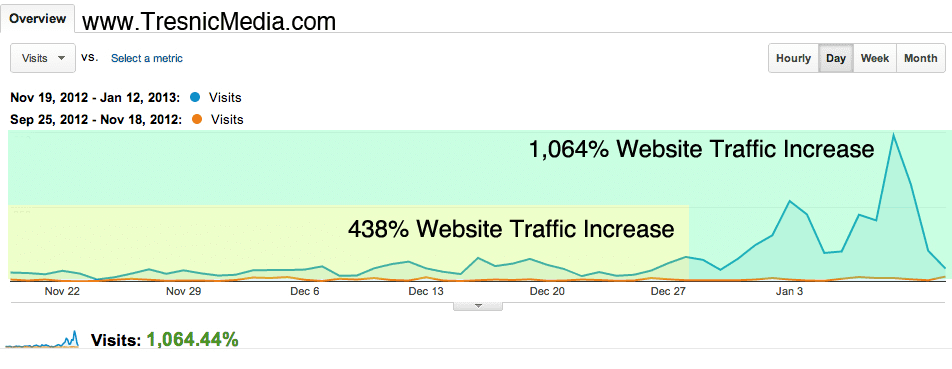
iv). It’s a form of inbound marketing: Inbound marketing is the act of attracting people to your content so they can share it willingly.
When you create a viral blog post or video, you’re not being pushy at all, the decision to share it always comes from the user.
It’s never invasive or intrusive. Brands can use viral content to interact better with their users instead of constantly pushing ads to them.
Best Practices for Creating Viral Content
Before you can succeed with viral content marketing, you need to follow the right industry practices that have proven to work over the years.
Let’s consider these best practices:
1). Create Content Worth Sharing
No matter the strategy you’re ever going to use in content marketing, the rule is to make sure your content is useful, interesting, and unique. These attributes will motivate people to share their piece of content on social media.
In his book, “Contagious: Why Things Catch On,” the author Jonah Berger discussed certain triggers that will guarantee a piece of content gets shared. One of such triggers is ‘social triggers.’
“We share things that make us look good.”
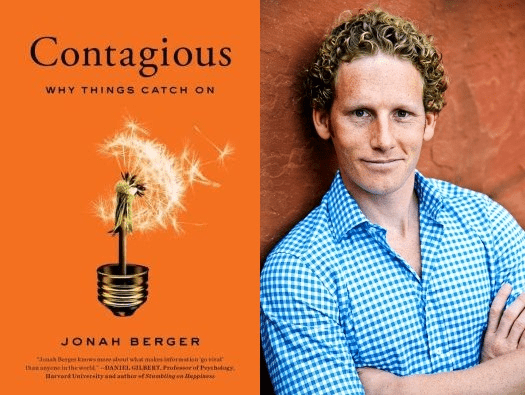
Don’t just get excited when you see a viral post or video, you should study posts, infographics, videos, and podcasts that at least garnered 1,000 shares online, try and find out why they were shared. What triggers made them successful?
Not every blog post or video has the potential to reach a lot of people. Funny enough, you might hit a jackpot whereby one of your blog posts or video catches fire and everyone is just talking about it and sharing it.
But for most of us, we’ll likely never experience that. That’s why creating content that’s worth sharing in the first place, is the key to increasing its potential of going viral.
2). Solve a Specific Problem
One of the best ways to get people falling in love with your content is to solve their problems.
You may not be able to fix every problem your target audience is struggling with, but you can identify one major problem and just go all in to address it.
The New Alzheimer’s Treatment was a popular post in 2016 because it brought a solution to people with such a challenge. People trusted and shared with their followers because it was based on scientific findings.
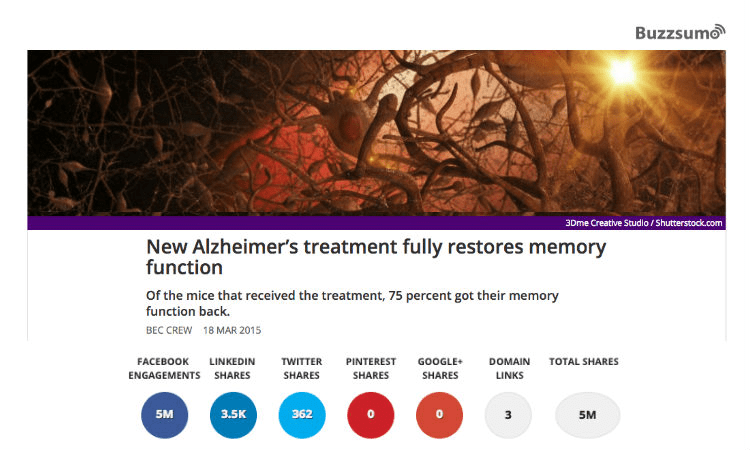
The content went on to generate 5 million social shares on the major social media networks. The original research generated more than 400 inbound links from other websites.

If your video or blog post offers a ton of actionable insights and helps your audience get better, become hopeful again, or take the right decisions, they’ll enjoy the content and share it happily.
They’ll want to share it with other people who would benefit from it.
3). Know Your Audience
This might seem like a piece of outdated advice, but it’s the key to nailing a viral content anytime. If you know your audience well enough, then you’re already aware of their challenges and struggles.
Buzzfeed and UpWorthy are two media sites that are growing and competing with other big brands such as The New York Times, Mashable, etc.
In its first year, UpWorthy went from 1 million monthly visitors to more than 20 million monthly visitors. But why is that?
The majority of UpWorthy’s posts are targeted at a demographic that’s well known. The contributors only create posts that will appeal to a segment of the market.
A glance at the latest posts on the homepage indicates the media company isn’t after businesses, but people interested in culture, lifestyle, timely news, entertainment, etc.
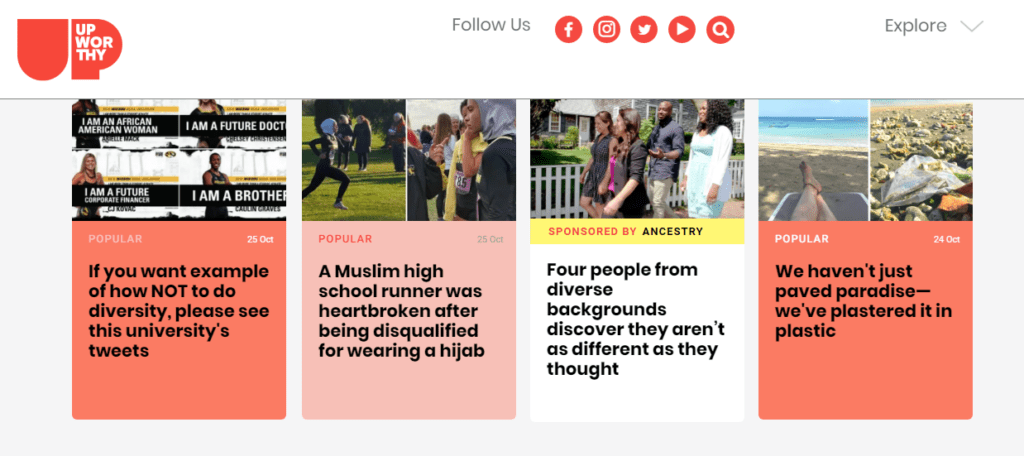
When you have so much knowledge about your market, it becomes easier to communicate with them in a language they’ll understand.
Curiosity is another emotional factor that makes content shareable. UpWorthy taps into this attribute to get lots of social shares — by creating irresistible headlines. Here’s an example:

You can even create content for a specific segment of your target audience. If you’re a B2B marketer, you can focus on the eCommerce segment or SaaS segment of your general audience.
Here’s an example of persona-specific targeting that Buzzfeed uses in its latest post to increase the odds of getting it shared:
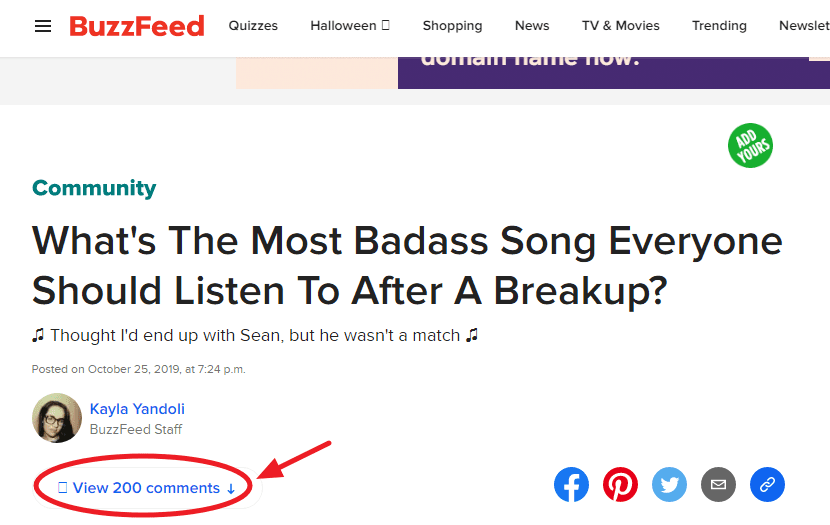
As you can see, the post above is targeted at people who are going through a breakup or knows someone. Now, they have a song they can listen to!
The post has generated 200+ comments, 1,000+ social shares, and several websites are linking to them. Surprising, it’s published in the last 24 hours. In 30 days, the post should go viral — judging from the emotional trigger of ‘pain.’
4). Take the Emotional Approach
Taking a logical approach to content marketing will likely drown your business. It can work when you’re dealing with facts and want people to use the data for decision-making processes.
However, taking a logical stand doesn’t help in viral content marketing.
According to Frac.tl, there’s a strong correlation between emotion and sharing. The study shows that any piece of content that evokes the emotion of surprise, happiness, pain, controversy, etc. will get readers committed to sharing it.
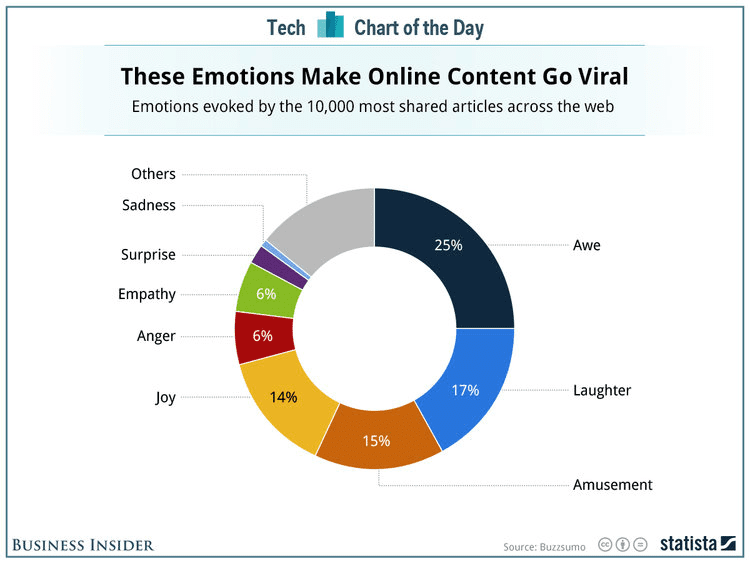
In copywriting, we learned that people make decisions emotionally but justify it by logic. For example, when someone spends a huge amount of money on a brand new car, what do you think motivated them?
If you ask them to be honest, they’ll tell you that it makes them feel good and well appreciated by friends and family members, not because they want to be able to move from Point A to Point B. “Feeling” good is emotional, a justification of necessity is logical.
So when next you’re developing content to get it shared on social media and on blogs, give people what they ‘want’ and not what they ‘need.’
When you’ve captured their interest and they’re not potential customers, you can start creating taking the logical approach to content creation.
5). Create a Comprehensive Content
Most of the viral blog posts and videos you’ll ever discover are comprehensive and helpful. For blog posts, no one is going to share a 500-word post, no matter how useful it seems. It’s rare to find people getting excited over a short post or video.
People want to share meaty content on social media. They want complete information on a given topic. A study conducted by Noah Kagan and BuzzSumo showed there’s a direct correlation between the length of content and how many shares it gets online.
As you can see from this chart, 3,000+ word post gets more shares than 1,000 – 2,000 words post.
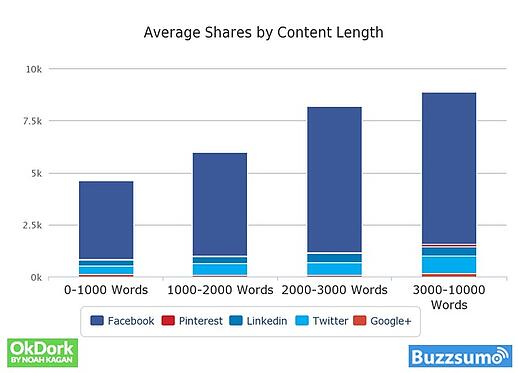
The longer your blog posts, for example, the more shares it’ll likely generate. Funny enough, some people will share your long content first before going through it. Isn’t that amazing?
6). Make Your Content Easy to Share
Creating great content with viral potential is one thing, getting others to share it is another. We need to make it easy for people to share the post, video, or infographic.
Viral content marketing boils down to getting your content shared primarily on social media.
Because when people see the post on YouTube, Facebook, Twitter, Instagram, or any other social media channel, they’ll be able to amplify it further — thereby generating lots of engagement with the post.
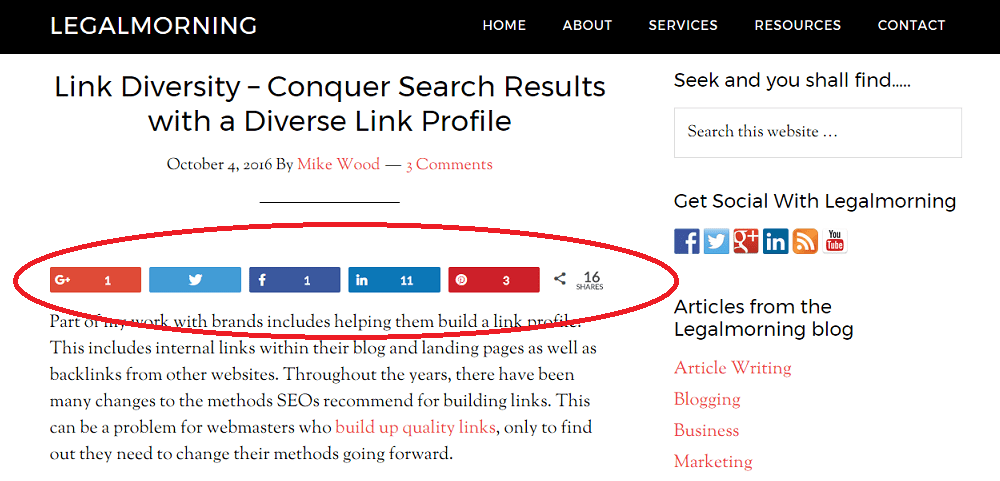
Social media makes it easier to get website owners to link to your viral post. You don’t have to send outreach emails or pay for these backlinks, they’ll come naturally.
There’s a chance that if your Twitter followers like your content, their followers will be more than excited to retweet and reshare it with their followers as well.
This creates a continuous loop that will drive lots of traffic to your website, send potential leads to your sales funnel, and create massive awareness for your brand.
The best way to make it easy for people to share your post is to ASK. Be respectful but don’t forget to nudge readers and viewers (if it’s an infographic or video content) to share it with their followers.
Make sure your social share icons are visible and enticing.
You don’t have to plaster your page with lots of social share icons, 2 – 3 icons should work. You want shares on Facebook, Twitter, and YouTube or Instagram.
How to Create a Viral Content That Generates Leads (Step-by-Step)
Now that you’re armed with the best practices for creating viral content, what are the steps to make it work? Let’s discuss it right now.
Step #1: Choose Your Topic
It can be tough to get your viral topic right. The North Shore Community College Library gives us clarity: the perfect topic is an intersection between what you’re interested in and what you can argue about.
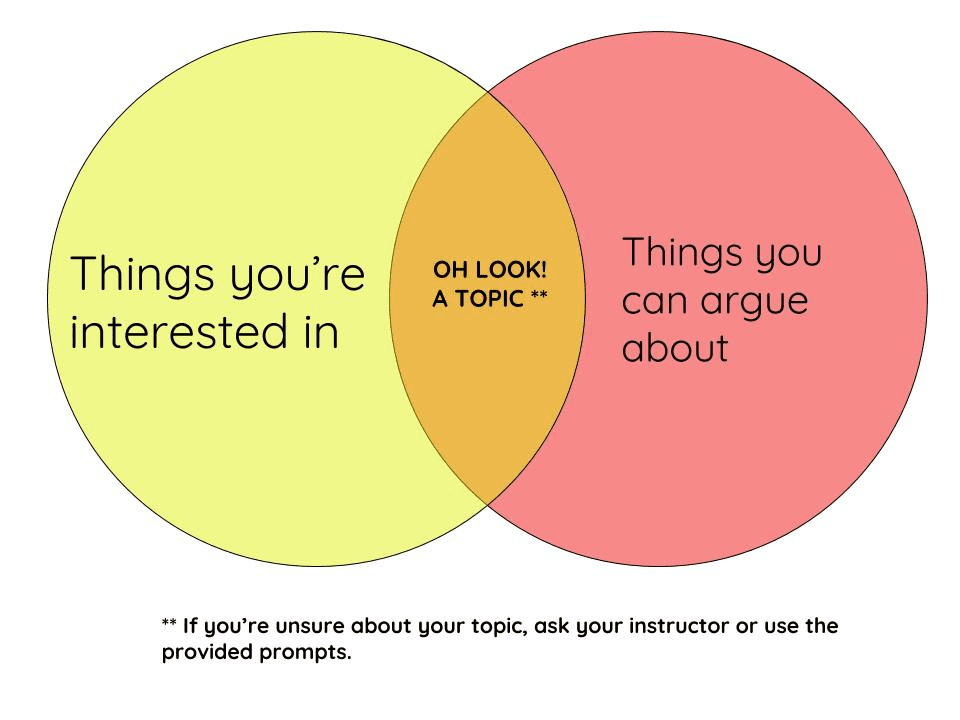
What topics do you want to cover? Will your audience receive it with open arms? Have you seen a similar topic go viral in the past?
These are the questions you should answer when picking your topic. Because your topic, just like choosing a niche for your site, will determine whether or note your content will go viral.
The good thing is that you can use other social platforms to find ideas for your content.
If a particular topic is being discussed or generated lots of votes and comments, there’s a chance it’ll go viral if you create a comprehensive content around that topic.
i). Mine Reddit for Popular Questions and Topics: Many content marketers don’t use Reddit but it’s a goldmine if you know how to mine the SubReddits for topics that thousands of people are talking about.
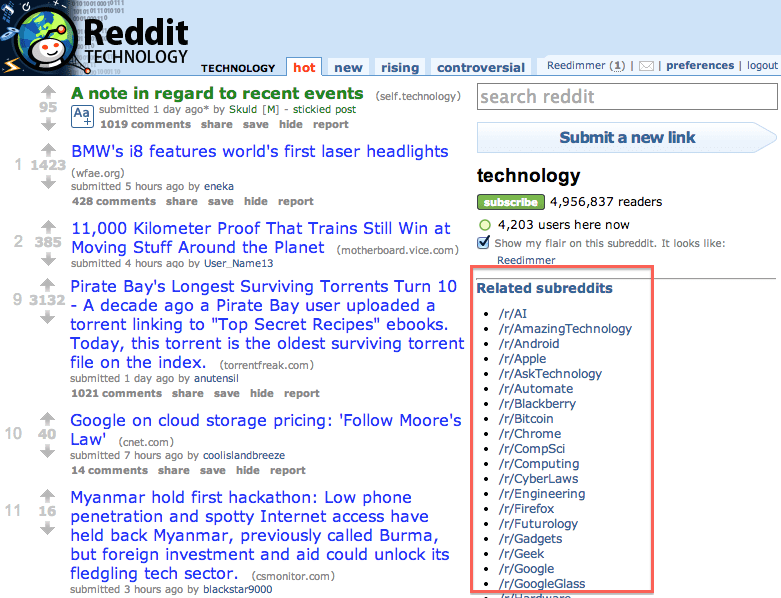
Navigate the groups or subreddits to find specific topics of interest you can work on. Just enter your keyword in the search bar to find subreddits with lots of upvotes. The users are telling you they want to know more about this topic — so go for it.
ii). Find Popular Questions on Quora: When you’re looking for topics and interests with lots of questions and answers, Quora is your best platform.
If a lot of people are asking the same question and lots of experts are responding, then you know you’ve caught a shark.
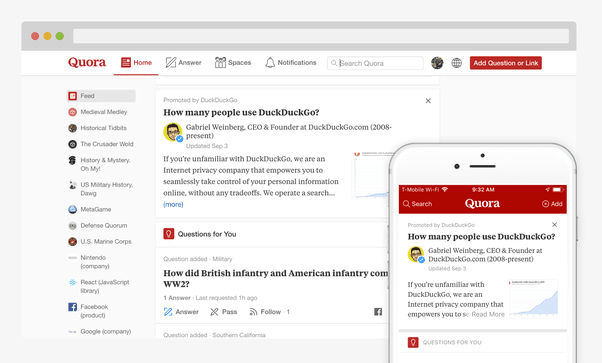
iii). Check Facebook Groups for Interests: How many Facebook groups do you participate in? As a marketer, I always check for trending topics that members are discussing.
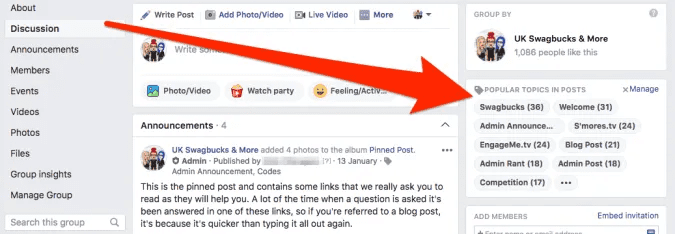
Among other things, I’ll enter the topic or question into any keyword research tool to find the variations. This is important because you want to target a term or keyword that people are searching for on Google.
People also search on Facebook and if your group is open for everyone, then Google can index the post when you share your link with others.
iv). Use BuzzSumo tool: There are no assumptions in business. And creating content is a serious business. Hence, it’s important to use tools to automate some aspects of your business.
A tool like BuzzSumo will show you the most shared content in your industry or niche, and also reveal the influencers who shared the posts, the sites linking to the post, and other data points that you can utilize for your viral content marketing campaigns.
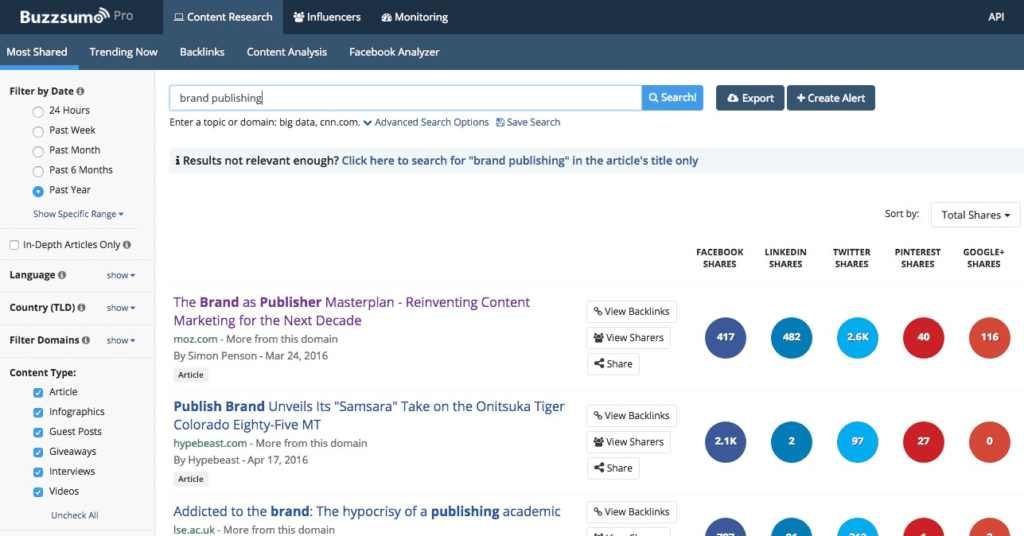
Step #2: Create a Magnetic Headline
Once you’ve chosen the best topic for your ‘potentially’ viral content, it’s time to craft an irresistible headline. If it ranks high on Google, you’ll get more clicks over time.

The headline is very important because it’ll draw people into the post. 73% of the time, people will make decisions to read your post or ignore it based on your headline. And 8 out of 10 people will read the headline, according to Brian Clark, founder of Copyblogger Media.
You make an impression with your headline. Without a compelling promise to the reader, the rest of the content may as well not even exist.
For example, if you found that a lot of people are discussing ‘bitcoin scam’ on Reddit, how are you going to tackle that topic in your headline to make it catchy and relevant (without deceiving your readers)?
Here are some headline ideas that might hook your readers:
How to Protect Your Bitcoin Investment from Impending Scam
What’s the Bitcoin Scam? It’s Not What You Think
Is Bitcoin Scam A Threat to Your Business?
Is Bitcoin Scam Real or Just Another Myth?
An Analysis of Bitcoin Scam, Everything You Should Know
25 Bitcoin Investors Reveal Their Experiences About Bitcoin Scam
As you can see, I used 3 types of headline formats:
- Question-based
- How-to
- Data-driven
When you make a promise in the headline, make sure you deliver the right information in the body.
Don’t use clickbait in your headline to draw people in, and disappoint them. They’ll leave, downvote your posts, leave negative reviews and comments, and this could affect your brand.
Step #3: Publish Your Content at the Right Time
Timing matters when it comes to viral content marketing. You might have even noticed that when you upload a video or publish a post on weekends or weekdays, the engagement tends to be higher or lower.
Once your content is ready and you want to push that viral button to give it wings on social media and get it republished on other websites, make sure you consider timing.

Why is that? Because the day you publish your video or post will have a huge impact on its visibility and virality around the web. This is a fact!
The chart below is a study conducted by OkDork and BuzzSumo which shows how content published on different days of the week is performing.
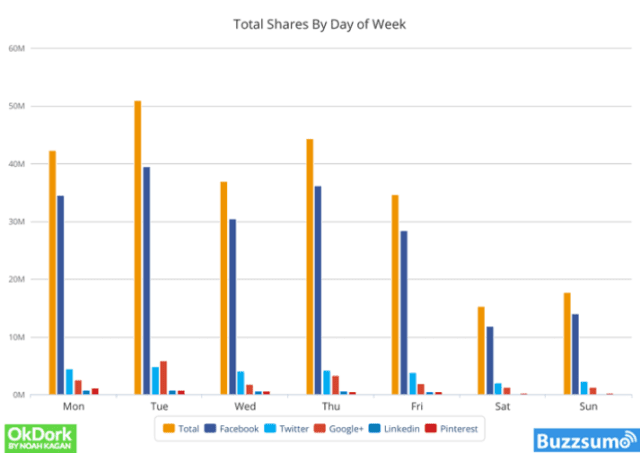
According to the study, Tuesday is the best day of the week to publish a new post that will get the most shares.
Monday, on the other hand, is the second-best day to get your post published if you want it to go viral within the week.
But this study isn’t a standard for every business. You may need to experiment with different publishing days to finally nail the perfect day of the week that works for you.
So what if you have to publish content and share it by 6:00 am on Monday to get the most shared? Well, you don’t have to be there to publish it — just schedule it.
Use Later if you have to automatically share on Instagram, use Sprout Social or HootSuite for Facebook, Twitter, and other social media platforms.
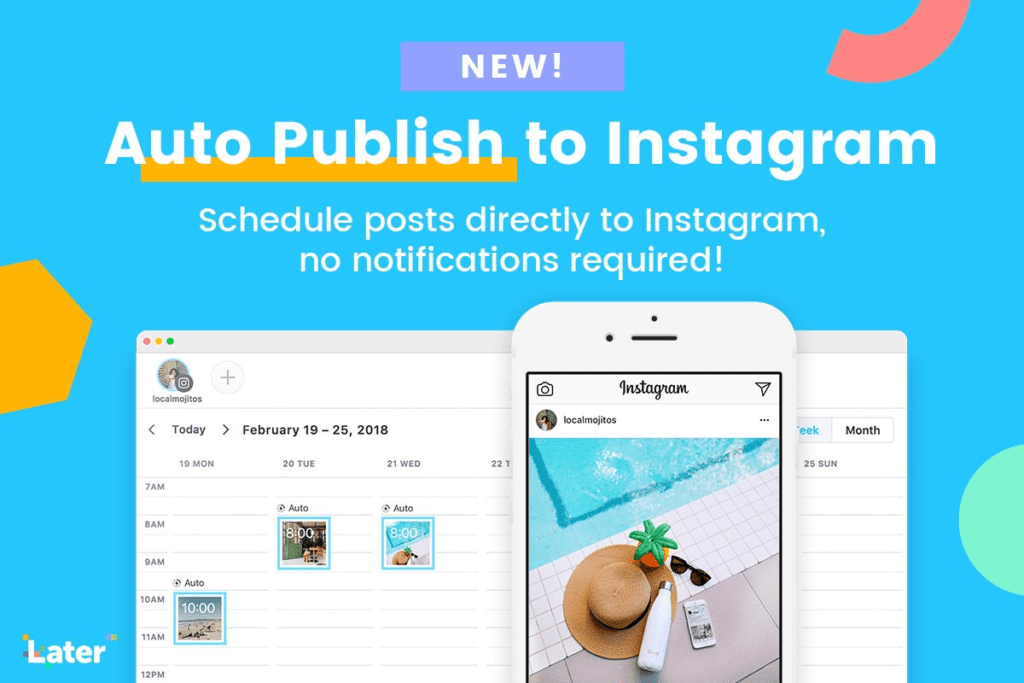
Conclusion
Creating viral content that generates leads is possible, but you’ll need consistency to understand the pattern that works for your business.
Remember there are pros and cons to creating viral content because if your web hosting sucks, driving thousands of traffic to your website will pose a huge problem.
So you need to get your website ready first, before embarking on a viral content marketing spree.
If you need help with content marketing or creating videos that have the potential to go viral on the web, speak with our marketing team.

